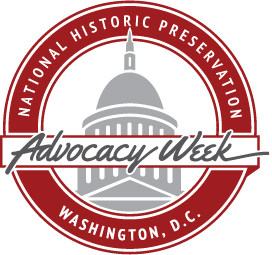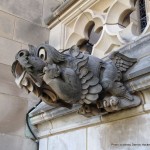The preservation movement in the New World developed as the country grew and took shape, but the early Colonial settlers had two meager goals in the new land: to survive and provide for their families in the harsh and dangerous wilderness. The new settlers wrote the history as they explored, surveyed, recorded, developed and built in this new territory. Their humble beginnings expanded rapidly over time into a country with a proud heritage, and some people had the vision and finances to .preserve these treasures.
Preservation Action is a 501(c)4 nonprofit organization created in 1974 to serve as the national grassroots lobby for historic preservation. Preservation Action seeks to make historic preservation a national priority by advocating all branches of the federal government for sound preservation policy and programs through a grassroots constituency empowered with information and training and through direct contact with elected representatives.http://preservationaction.org/

In the late 1700’s, the United States government was in its infancy. The planters who established and organized the local government met in a building in Williamsburg, called the House of Burgess (Andrews 1964:2). The founding fathers of our country were involved in becoming independent from England and ensuring our safety and welfare. They were not prepared to focus on protecting or saving points of interest, but colonial settlers were inspired to save sites. These would affect the budget tremendously, not to mention the drain on the workforce. It would take another 150 years. In 1872, the federal government became involved in preserving our natural features. They included the first national park, Yellowstone National Park, Casa Grande, 1889, Mesa Verde, 1906, and Chickamauga Civil War battlefield, 1890. The National Park Service was created in 1916 to maintain these resources. In the 1930s, with the Great Depression, the economy went into a spiral downward and again stifled the growth of the nation and the efforts of the preservationist
Historic Preservation is a method of saving the heritage of a culture, country, and people. It means the people can give back to their community they cherish so much. They can be proud to display the craftsmanship of the tradesman’s work so hard to bring to fruition in and architectural design or a simple cabinet door.
The pursuit of historic preservation followed two paths—private and public (Tyler 2000: 33). Private individuals or groups concentrated on historical figures and landmarks connected to important historical events or men. The federal government took care of our national parks and the natural resources of the country. In 1949, the public and private sectors united to help pass the National Trust for Preservation
The development of a community organization is the culmination of its inhabitants becoming protective of their proud heritage and its history. They want to show the entire city even the entire country how they have preserved the historic resources in their community. They have followed the rules set forth by the federal, state and city government to comply with the necessary requirements to conform. These guidelines give the local people a source with which to follow in preserving the heritage.

